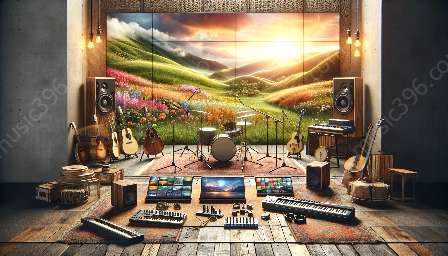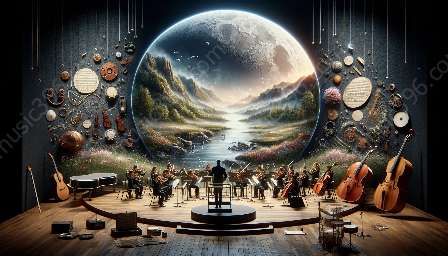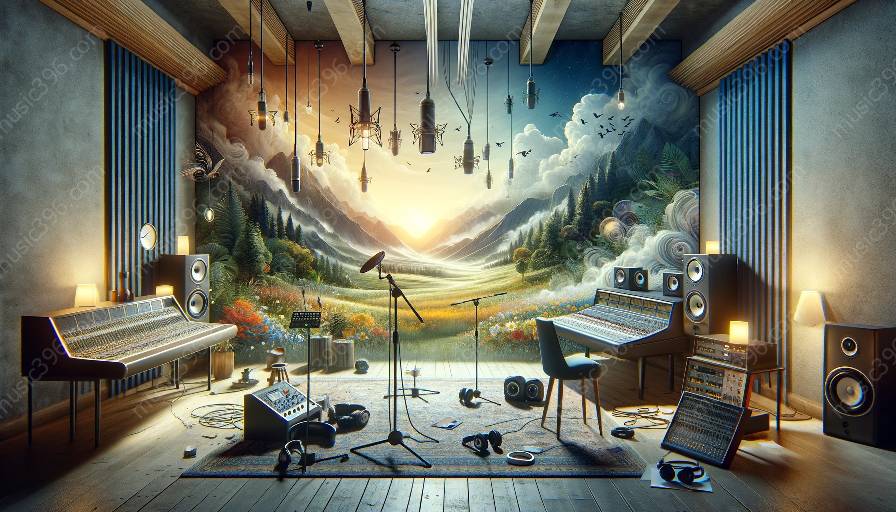Reverb plays a crucial role in achieving the desired recording aesthetics in music production. It is a fundamental element that influences the overall sound of recordings, contributing to the spatial and emotional impact of the music. Understanding the impact of reverb on recording techniques and its significance in music references is essential for producers, engineers, and musicians to create compelling and immersive sonic experiences.
Understanding Reverb
Reverb, short for reverberation, refers to the persistence of sound after the original sound is produced. In a physical environment, reverb occurs when sound waves reflect off surfaces, creating a complex pattern of echoes that blend with the original sound. In a recording context, artificial reverb is simulated using electronic devices or software to replicate the effect of natural reverb in different environments, such as rooms, halls, or chambers.
Creating Spatial Depth
One of the primary roles of reverb in recording aesthetics is to create spatial depth within the audio mix. When used effectively, reverb can give the impression of placing instruments or vocals in a specific acoustic environment, adding a sense of dimension and space to the sound. By adjusting the reverb parameters, such as decay time and pre-delay, engineers can tailor the spatial characteristics to complement the mood and style of the music.
Enhancing Emotional Impact
Reverb also plays a significant role in shaping the emotional impact of recordings. The choice of reverb type and settings can evoke specific emotional responses from the listener. For example, a lush, expansive reverb may convey a sense of grandeur and awe, while a tighter, shorter reverb can create a more intimate and focused sonic atmosphere. Understanding the emotional nuances of different reverb treatments enables producers to enhance the expressiveness and storytelling aspect of the music.
Integration with Recording Techniques
Recording techniques heavily influence the application of reverb in achieving the desired aesthetics. Engineers and producers experiment with microphone placement, room acoustics, and signal processing to capture the original sound with the spatial qualities they envision. The judicious use of reverb during the recording process can provide inspiration to the performers and shape their delivery by simulating the intended sonic environment.
Striking a Balance
It is essential to strike a balance when integrating reverb into the recording process. Overuse or improper application of reverb can muddy the mix and diminish the clarity of individual elements. Conversely, insufficient reverb can result in a dry, lifeless sound lacking depth and realism. By understanding recording techniques and the relationship between reverb and the source material, engineers can make informed decisions to achieve the desired sonic impact.
Impact on Music References
Reverb has a profound impact on music references, influencing the sonic characteristics of different genres and styles. For instance, the lush, enveloping reverb associated with orchestral recordings differs drastically from the tight, focused reverb commonly used in jazz or rock productions. Understanding the historical and cultural significance of reverb in various music references enables producers to make informed creative choices and pay homage to iconic sonic aesthetics.
Conclusion
In conclusion, reverb plays a multifaceted role in achieving the desired recording aesthetics in music production. Its ability to shape spatial depth, emotional impact, and integration with recording techniques makes it a fundamental element in the creative process. By understanding the nuances of reverb and its impact on music references, producers, engineers, and musicians can harness its potential to create captivating and evocative sonic experiences.









































